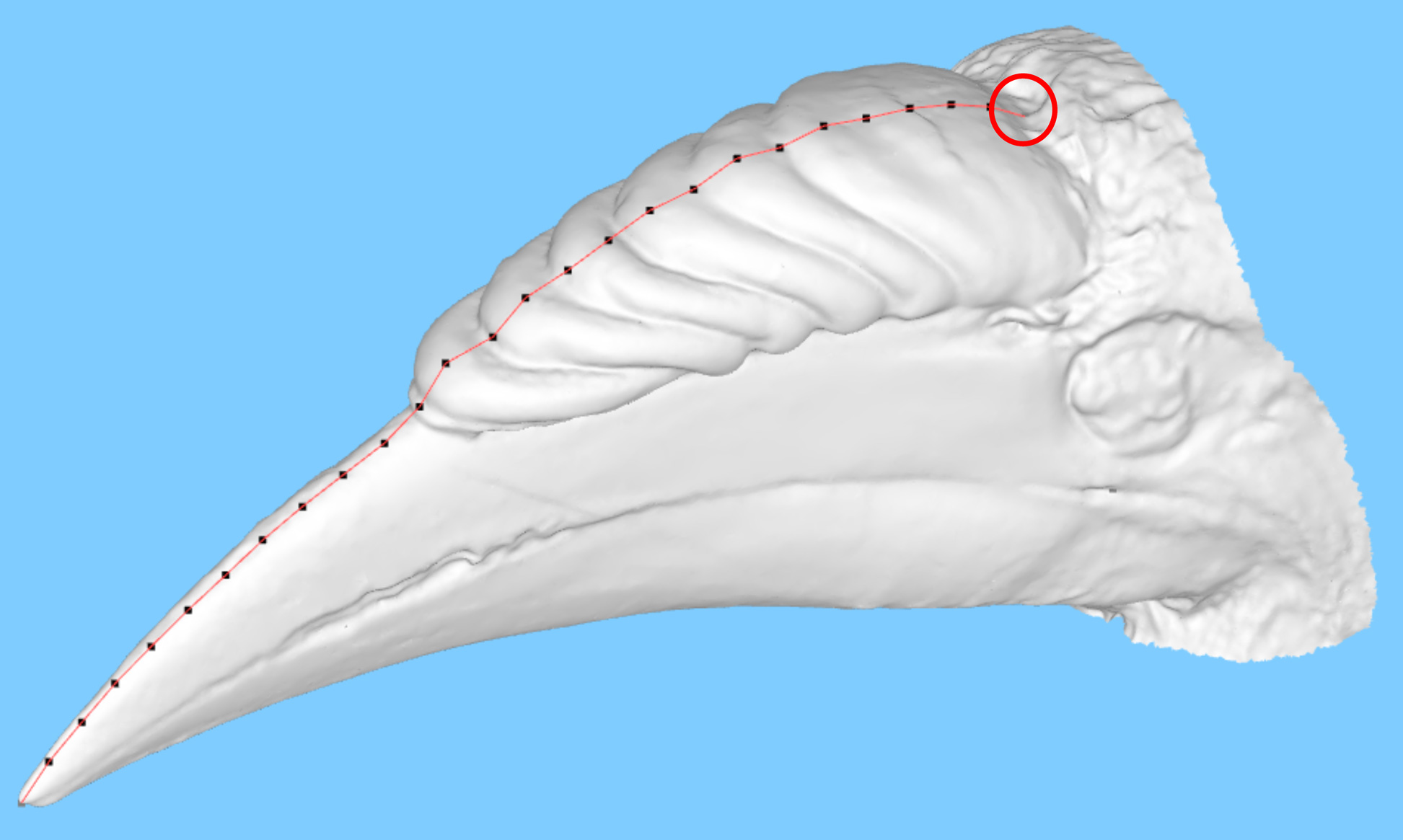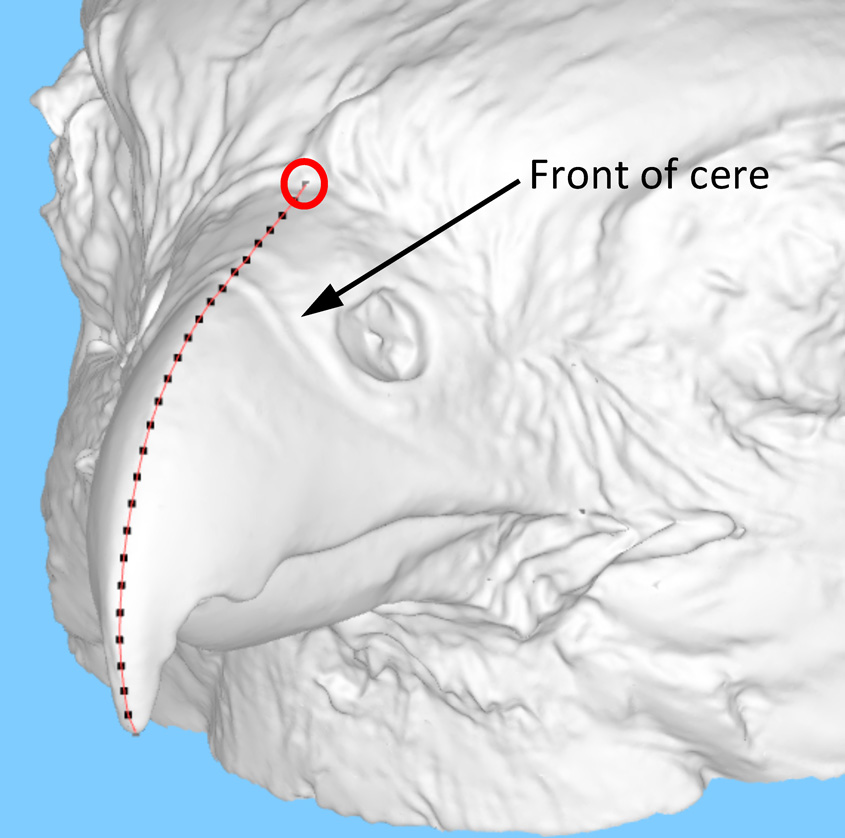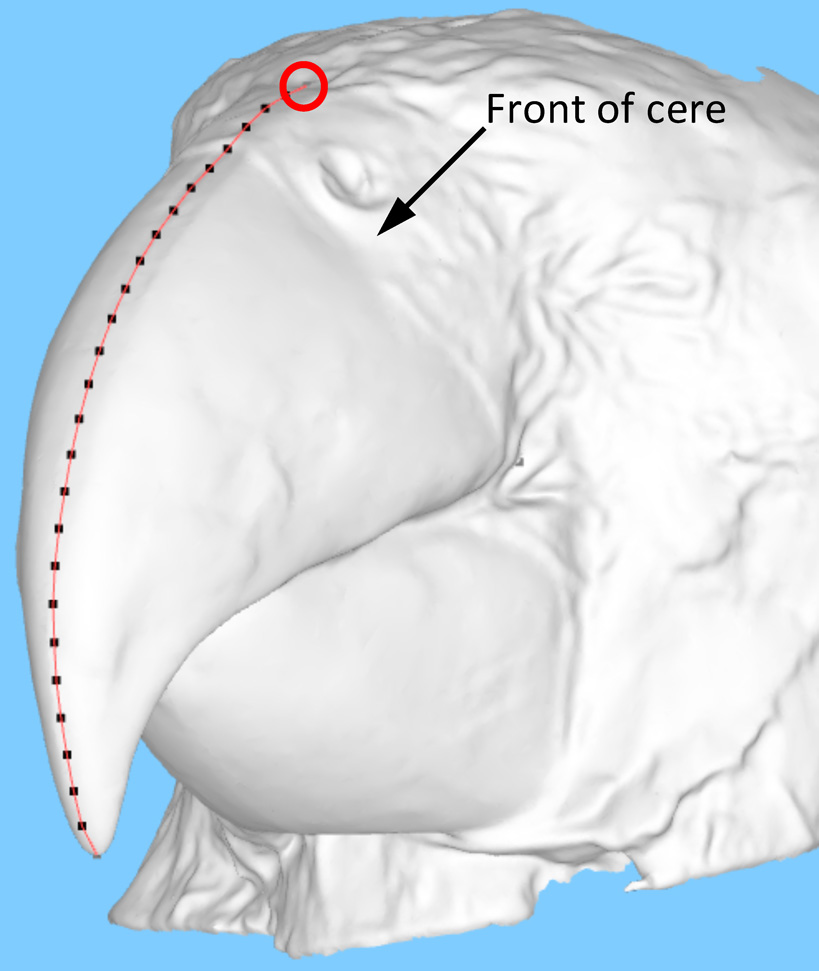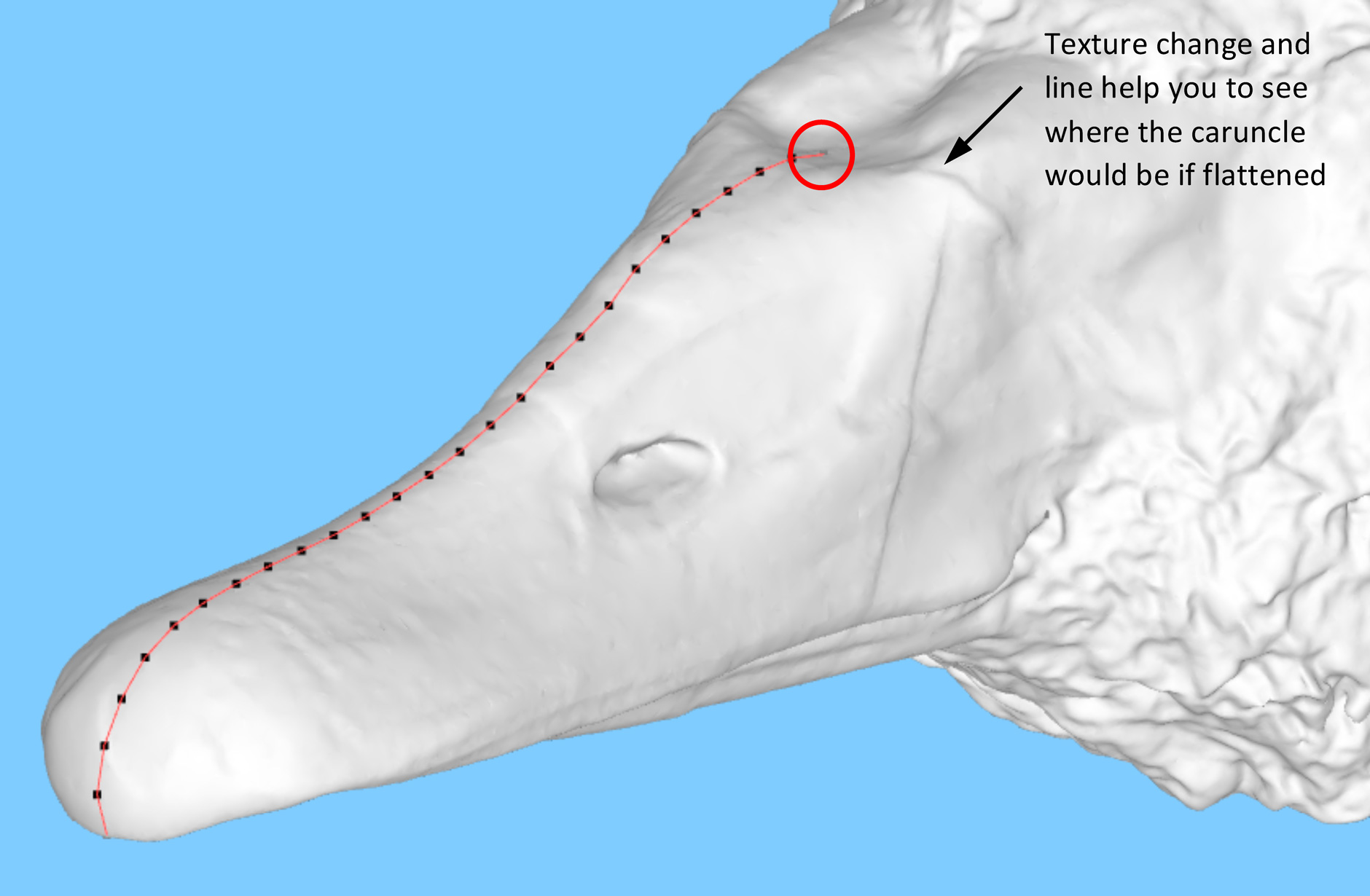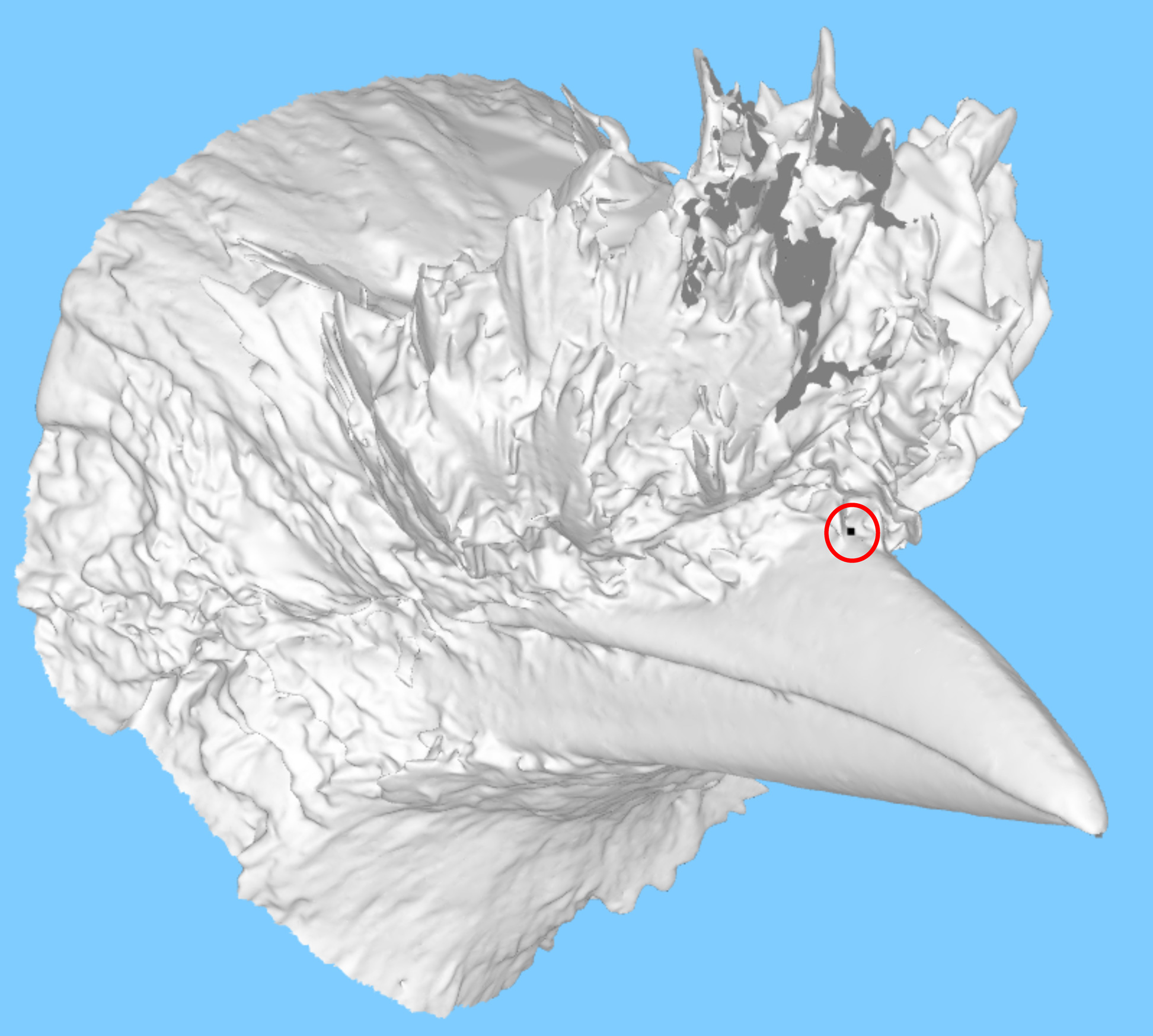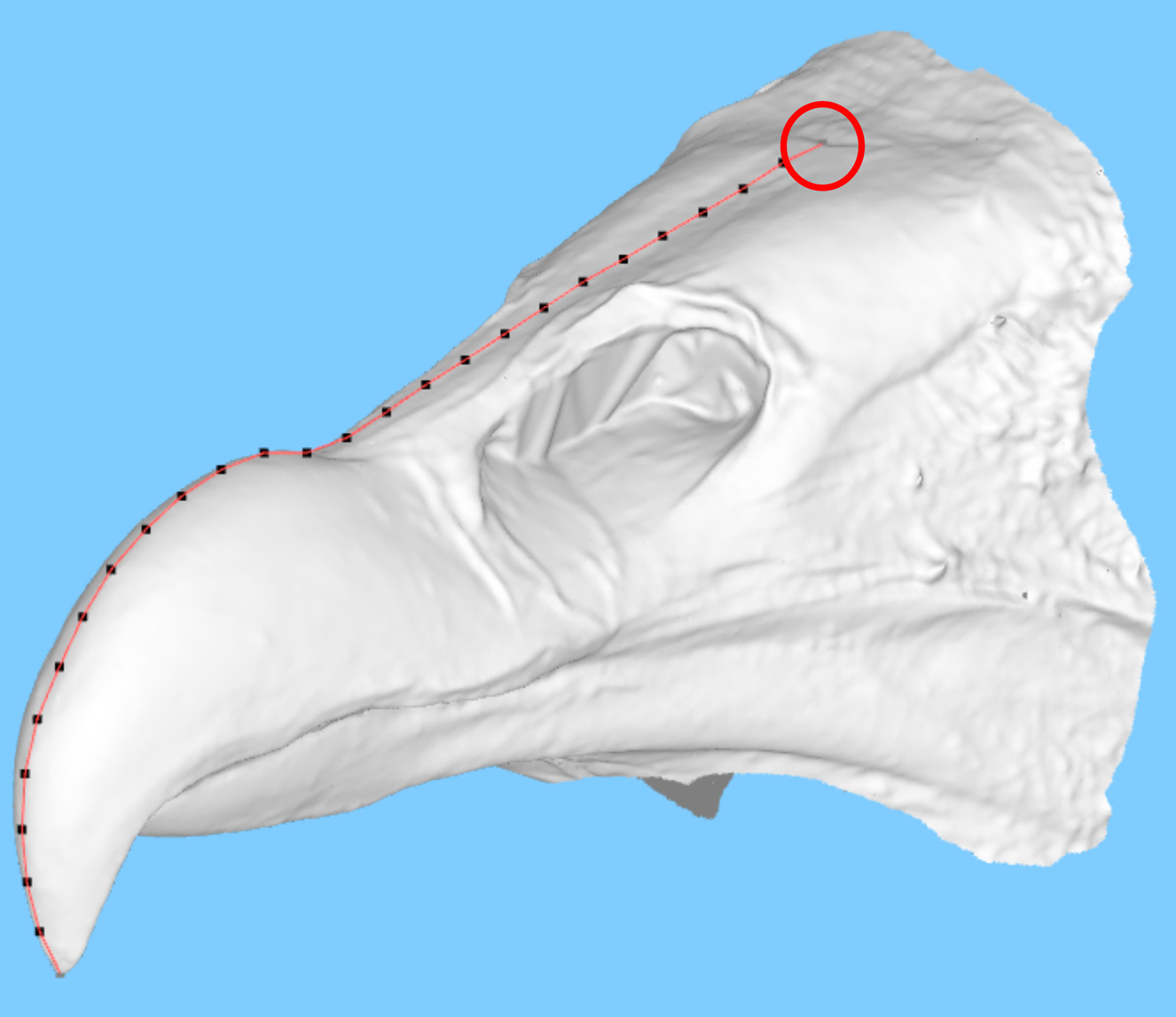Point 3 Extra Tips
Potentially difficult species include: hornbills, fowl, parrots, raptors, and anything with a daft haircut.
Casques
Hornbills (and a few other species too) typically have elaborate display ornaments on their bills, called casques. The example below is a Narcondam Hornbill (Aceros narcondami). Initially, we’re going to include the casques in our analysis, so place the point at the back of the casque, where the bill meets the feathers.
Ceres
A few types of bird (including birds of prey, parrots, and pigeons) have a covering around the nostrils called a cere. In life, the cere is often a different colour to the rest of the beak, but sadly our scanners don’t record colour!
When you place Point 3, we’d like you to place it at the back of the cere, like in these examples of a Peregine Falcon (Falco peregrinus) and a Greater Vasa Parrot (Coracopsis vasa).
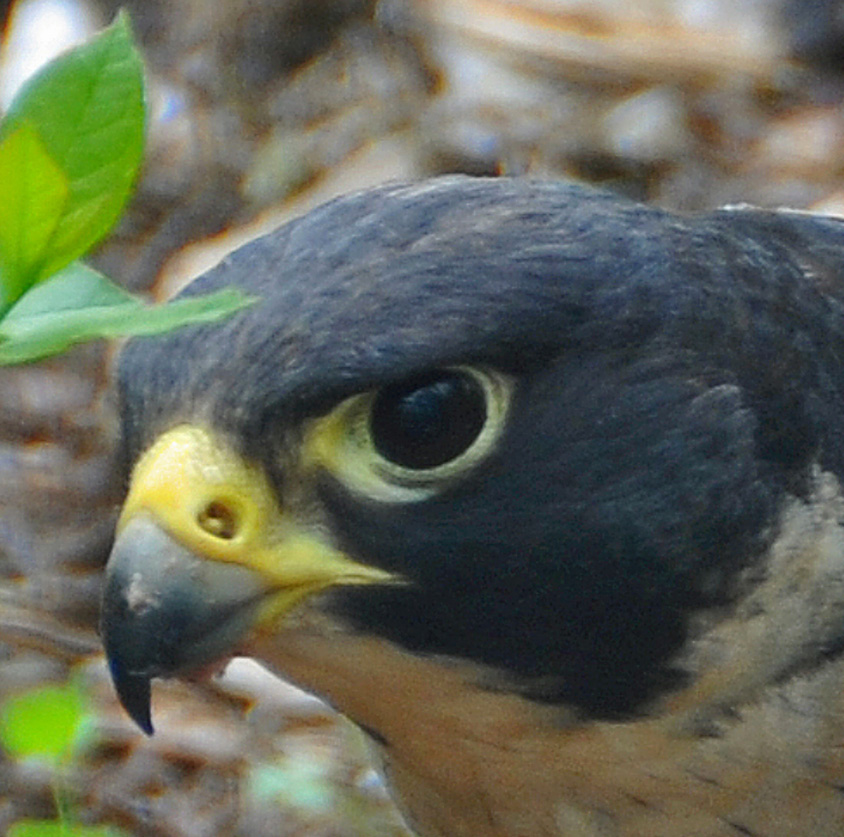
CC Attribution-Share Alike 2.0 © Dennis Jarvis, Flickr. Cropped from original. https://www.flickr.com/photos/archer10/2587959890/
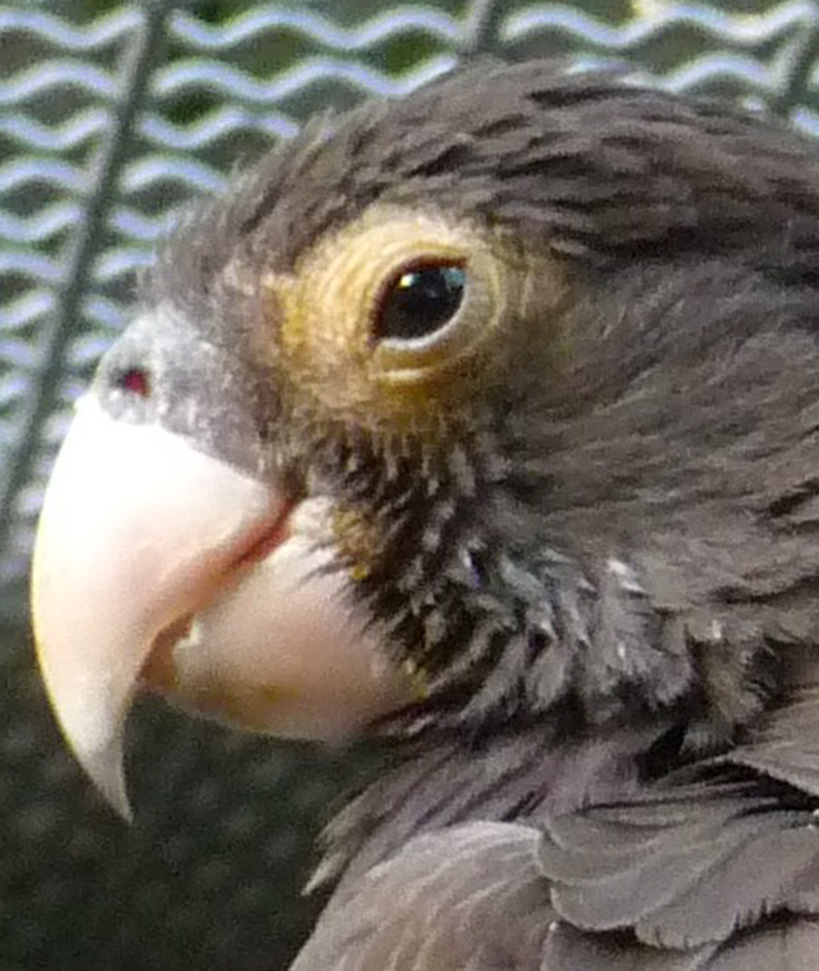
CC Attribution-Share Alike 3.0 © 4029mdk09, Wikimedia Commons. Cropped from original and horizontally flipped. https://commons.wikimedia.org/wiki/File:Coracopsis_vasa.JPG
Caruncles
Fowl and waterfowl may have a fleshy protuberances from their bills. Examples of this are the wattles and snoods of turkeys, or the lump at the base of a swan’s bill. We do not want to include these in our analysis, especially as they can be flattened in museum specimens. The example below is from the Black-necked Swan (Cygnus melanocoryphus).
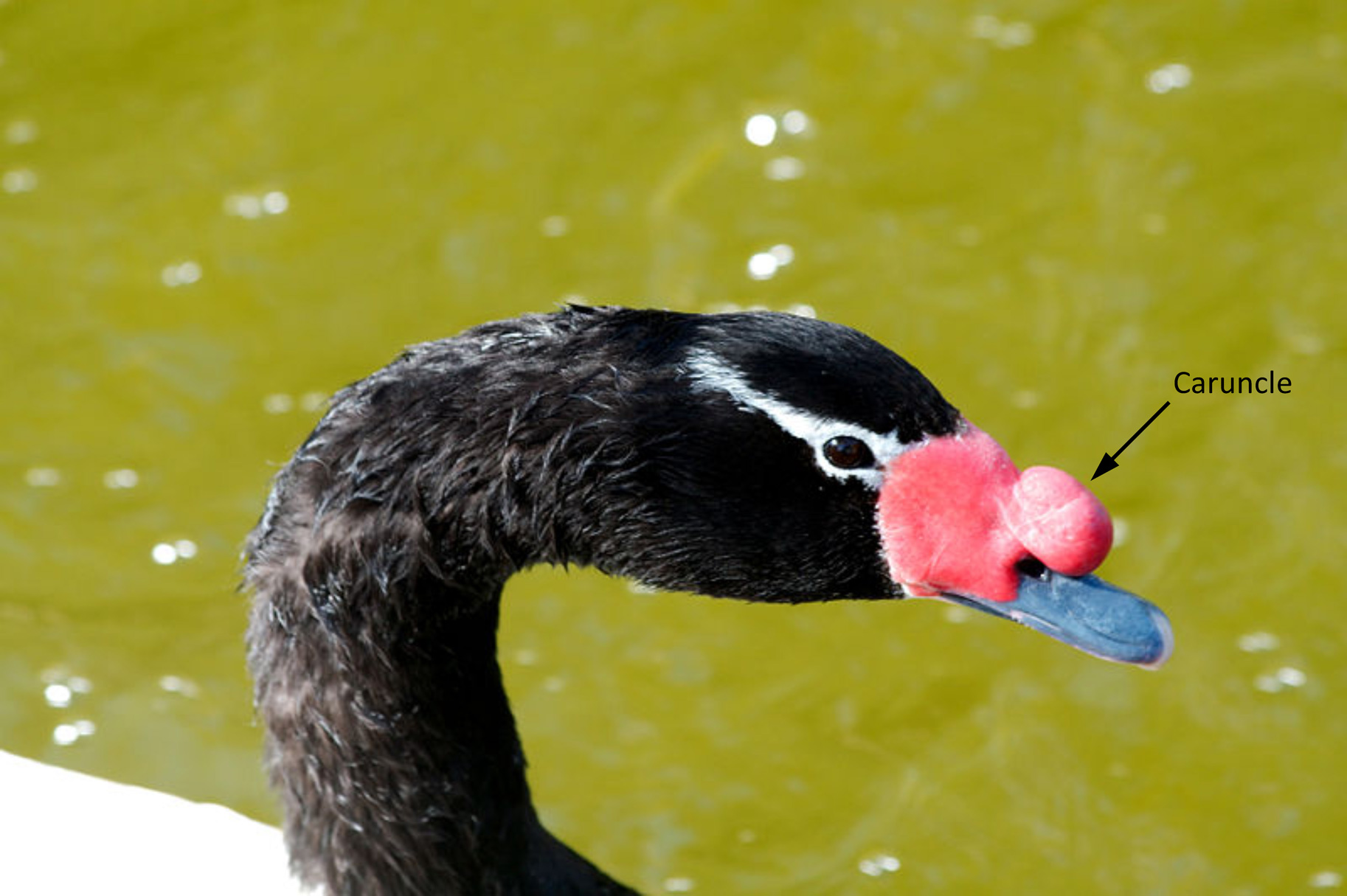
CC Attribution-Share Alike 3.0 © Dori, Wikimedia Commons https://commons.wikimedia.org/wiki/File:Black-necked_Swan_5050.jpg
In the specimen we scanned, the caruncle is flattened, but you can tell where it should be because the texture of the scan changes as you move from the bill to the caruncle, as does the slope of the bill. Point 3 should go at the base of the caruncle, or at the point where the texture changes.
Feathers (or lack thereof)
This is a Crested Myna (Acridotheres cristatellus). It has a crest of feathers that stick out, making it difficult to place Point 3. If you get a bird with a lot of feathers covering its face like this, it’s a good idea to do an image search for the same species online. Is this normal for this species, or have we scanned an individual with a particularly outrageous sense of style?
If it’s the former, put the point as far back on the bill as you can, as close to the feathers as possible while still staying on the midline. If it’s the latter, or you’re not sure, flag it up in the comments and we’ll take a look ourselves.
Conversely, some birds (like vultures) have hardly any feathers on their heads at all. In these cases, our marker goes not at the point where the bill meets the feathers, but at the point where the bill meets the skin. Below is an example of a Turkey Vulture (Cathartes aura). Again, you should be able to place the marker based on the change in texture and slope, but it’s also useful to do an image search for the species so you can see colour or other distinctive features.
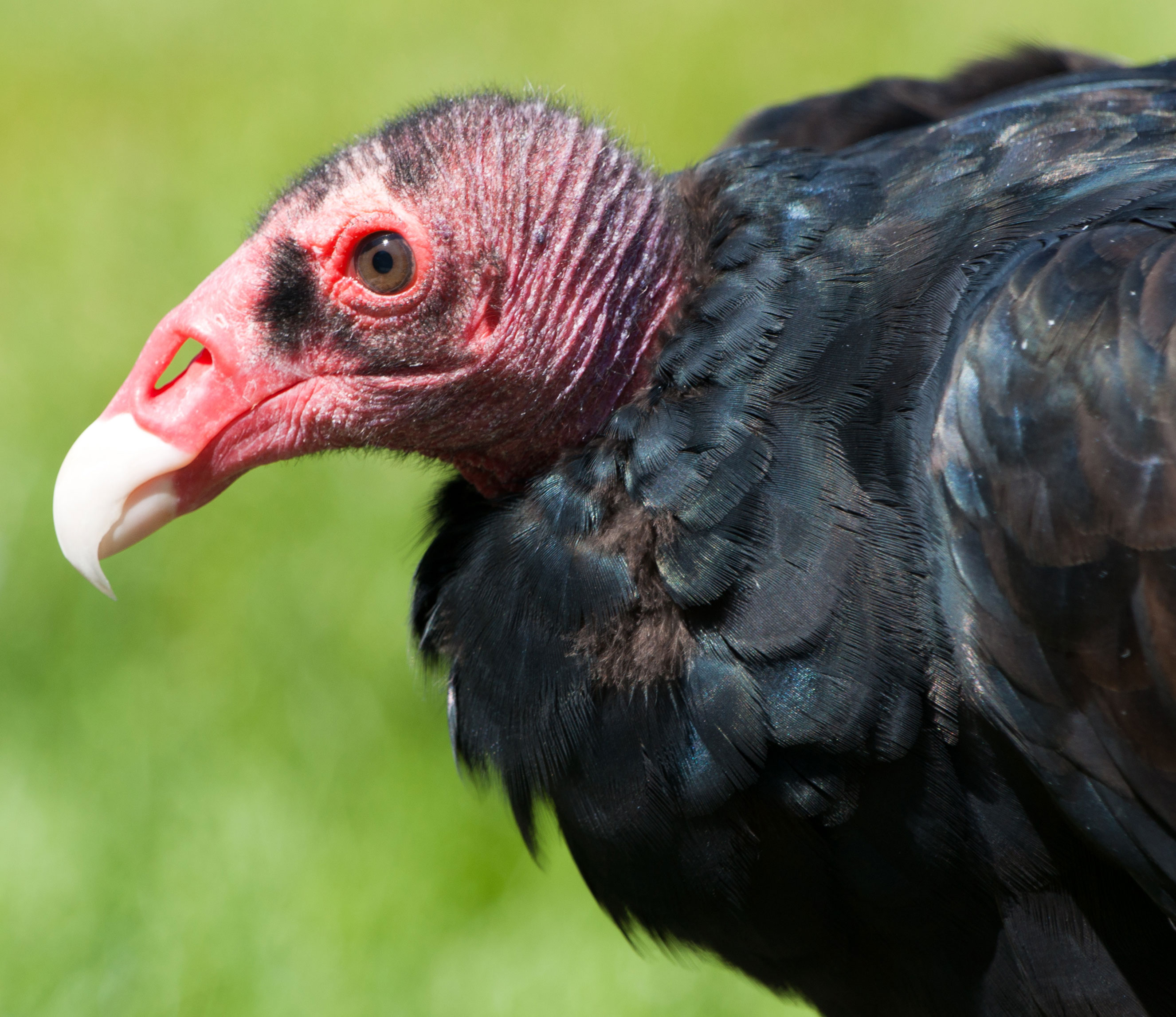
CC Attribution 3.0 © Jason Hickey, http://picasaweb.google.com/111219778721183890368/SanFranciscoZoo?gsessionid=MksfW18C7NEZBOrEtkimHw#5515829167105302978
